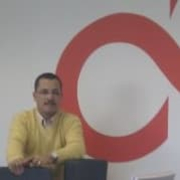BDRSuite by Vembu offers comprehensive and cost-effective Backup and Disaster Recovery software tailored to meet the diverse data protection requirements of Businesses and Service Providers. BDRSuite provides robust backup solutions for a wide range of IT workloads, including virtual machines, servers, endpoints, SaaS applications, cloud VMs, NAS/File Shares, and databases & applications. It offers the flexibility to store backups anywhere and centrally manage the entire backup infrastructure.



| Product | Market Share (%) |
|---|---|
| BDRSuite Backup & Replication | 0.6% |
| Veeam Data Platform | 11.9% |
| Commvault Cloud | 6.1% |
| Other | 81.4% |
| Type | Title | Date | |
|---|---|---|---|
| Category | Backup and Recovery | Sep 16, 2025 | Download |
| Product | Reviews, tips, and advice from real users | Sep 16, 2025 | Download |
| Comparison | BDRSuite Backup & Replication vs Veeam Data Platform | Sep 16, 2025 | Download |
| Comparison | BDRSuite Backup & Replication vs HPE Zerto Software | Sep 16, 2025 | Download |
| Comparison | BDRSuite Backup & Replication vs Commvault Cloud | Sep 16, 2025 | Download |
| Title | Rating | Mindshare | Recommending | |
|---|---|---|---|---|
| Veeam Data Platform | 4.3 | 11.9% | 94% | 429 interviewsAdd to research |
| Commvault Cloud | 4.3 | 6.1% | 95% | 111 interviewsAdd to research |
BDRSuite Backup & Replication offers exceptional ease of use and configuration, a user-friendly interface, and strong compression and encryption features. Companies appreciate the automatic replication, virtual machine backups, and quick restore capabilities. Its flexibility supports various infrastructures, and it provides reliable disaster recovery options. Backup management is enhanced by the incremental backup, multiple restore points, and agentless backup for Hyper-V environments. Multi-tenant support and affordable pricing make it popular among businesses.
Client support for BDRSuite Backup & Replication needs improvement due to slow response times and lack of 24/7 availability. Customers find the user interface complex and expect better documentation. Hardware integration options are limited, and automation features could be expanded. Enhancements are needed in data compression efficiency and deduplication functions. Licensing and connectivity issues affect setup, while the current reporting and dashboard functions lack the desired information granularity, impacting ease of use and management.
Users reported mixed financial impacts from BDRSuite Backup & Replication. Initial setup involved costs in development and labor with some estimating returns within 6-24 months. Although some struggled to calculate savings, the solution offered significant time reductions and protection akin to insurance. ROI was seen in server consolidation and efficiency, with storage costs notably reduced. Users valued the time saved and peace of mind provided by reliable data restoration capabilities, despite not facing major disasters yet.
BDRSuite Backup & Replication offers competitive pricing with flexible licensing models suitable for enterprises. Many users find it cost-effective and cheaper than alternatives like Veeam and Veritas. The product allows for a variety of licensing options, such as subscription-based, perpetual, and per-host licenses, providing versatility for different business needs. Though some users mention the need for clearer documentation on licensing, BDRSuite is generally regarded as affordable, with potential cost savings of 30-50% compared to competitors.
BDRSuite Backup & Replication is used for backing up virtual machines on platforms like VMware and Hyper-V. It is also utilized for file and database backups, disaster recovery, and business continuity. Users employ it for on-premise and cloud-based backups, image backups, replication of data centers, and hybrid deployments. Organizations value its cost-effectiveness, flexibility, and ease of backup management while addressing both small and large-scale environments for disaster recovery.
BDRSuite Backup & Replication's customer service is seen as slow and lacking timely responses. Technical support is said to be knowledgeable, but inconsistent in response speed. Users report waiting hours for replies. Support is available 24/7 and provides solutions effectively when reached. Some users express dissatisfaction with call handling methods. Others appreciate detailed support, fast response, and helpful staff. Local time zone differences pose challenges for overseas users.
Many found BDRSuite Backup & Replication's setup straightforward, with quick deployment and reliable support. Some faced issues with MySQL or bugs but resolved them with assistance. Setup was generally easy for those familiar with IT, although a few encountered technical challenges. Integration was smooth in most environments, and it was deemed intuitive and manageable. For Windows setups, the process was often quicker compared to Linux deployments requiring command line use.
BDRSuite Backup & Replication handles scalability well, meeting diverse needs efficiently. Users indicate that while scalability is good, it depends on available resources like hardware and licenses. The ability to scale with BDRSuite is achievable, supporting various environments from small setups to large virtual machines. License scalability is straightforward, facilitating additional server integration. Despite some reservations about individual performance, most reports suggest BDRSuite can manage increasing demands effectively within different organizational needs.
BDRSuite Backup & Replication shows mixed stability feedback. Many experience a stable deployment with no significant issues, praising its smooth operation and effective support. Some face challenges with low bandwidth, certain operating systems, and periodic restarts. Solutions like scheduled reporting ensure reliability, and support resolves issues quickly. Users find it stable for both backups and restores, although some mention issues on specific platforms or configurations, leading to necessary updates or support engagements.
| Company Size | Count |
|---|---|
| Small Business | 38 |
| Midsize Enterprise | 12 |
| Large Enterprise | 9 |
| Company Size | Count |
|---|---|
| Small Business | 1694 |
| Midsize Enterprise | 30 |
| Large Enterprise | 122 |
BDRSuite is designed to help businesses keep their data secure and ensure it is easily recoverable in the event of data loss or ransomware attacks. With BDRSuite, businesses can achieve reliable data protection and ensure business continuity – all at an affordable price.
Download BDRSuite's 30-day Free Trial Here.
PRICING DETAILS
VMs, Servers & Cloud Backup at $48 per workload/year (VMware, Hyper-V, KVM, oVirt, Proxmox, Windows, Linux, AWS, Azure, File Share-500 GB)
Endpoint/Workstation Backup at $12 per endpoint/year (Windows, Linux, Mac)
SaaS Backup at $12 per user/year (Microsoft 365, Google Workspace)
DBs & Applications Backup at $72 per application/year (SQL Server, PostgreSQL, MySQL, Microsoft Exchange Server, SharePoint Server)
BDRSuite Backup & Replication was previously known as Vembu BDRSuite.
NASA, Intel, CISCO, PHILIPS, Atos, HEXAWARE, Motorola
| Author info | Rating | Review Summary |
|---|---|---|
| Technical Sales Director (Owner) at HSR IT Services SARL | 4.5 | We use BDRSuite for backing up VMware and Hyper-V environments and find it better than competitors because of features like live migration and instant data recovery. It's easy to use but integrating with free VMware licenses can be challenging. |
| IT Director at Boom Logic | 5.0 | My company uses BDRSuite for efficient cloud and file backups, integrating seamlessly with VMware ESXi. It's HIPAA compliant, cost-effective, and offers customizable backup schedules. While documentation could improve, it quickly returned our investment compared to alternatives like Veeam. |
| Director at Switact | 4.0 | <p>I've used BDRSuite Backup & Replication for five years and found it reliable, easy to use, and affordable, with smooth setup and good support, though we've now moved to Veeam due to changes in our virtual environment strategy.</p> |
| Owner at DataMate | 4.5 | I use BDRSuite for its hybrid backup solution, allowing both local and off-site storage, making it economically viable and secure. It offers valuable features like incremental backups and multiple restore points. I wish it supported yearly backups. |
| Owner \ CTO at GREG PAULINO AND ASSOCIATES | 4.0 | I use BDRSuite for backing up and replicating data center servers and disaster recovery, appreciating its strong disaster recovery capabilities. Initially, user onboarding was challenging, and automation in the Remote Management Module could be improved. |
| Managing Director at Red Chip Solutions | 4.5 | We rely on BDRSuite for database and server backups due to its user-friendly nature and maintenance-free setup. Although the initial setup could be simpler, it outperforms our previous manual and Google Drive Sync methods. Our deployment is on Google. |
| IT Specialist at a hospitality company with 11-50 employees | 3.5 | We utilize BDRSuite for backing up servers, virtual machines on Hyper-V, and tape backups. The implementation was smooth, but we faced issues with standalone tape drive connectivity. Though ROI is modest, the granular backup feature has significantly improved efficiency. |
| Director of IT at MTSI, Inc. | 4.5 | We use BDRSuite for our shared files server backups due to its speed and reliability. The solution's granular recovery, flexible scheduling, and faster incremental backups streamline our management. It saves us time, although complex tasks occasionally need technical support. |